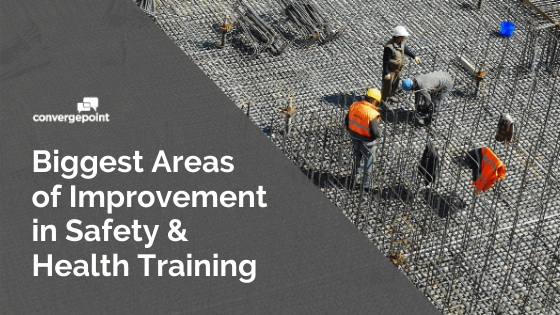Biggest Areas of Improvement in Health and Safety Training

“Safety first!” This should be the mantra for each and every one of your employees. A safety culture should be firmly embedded within your organization to the point that safety is second nature to any employee, without need to constantly resort to the imposition of reprimand and other penalties for employee non-compliance.
There is no magic wand to attain a mature, embedded safety culture. However, safety and health training remains one of the most effective means by which an organization can help foster a culture that respects but also demands the safety and health of all employees.
We will look at four major ways in which your safety and health training could be improved in 2020 and beyond
Leadership Training in Safety
Safety continues to be viewed as an ‘operational issue’ by many organizations. Executives understand that injuries and deaths can be strategically problematic, of course. But the persistent view is that safety is a ‘shop-floor’ matter, best dealt with at the line management and supervisory levels. This view is not only problematic, it’s wrong.
Executives need to be familiar with risk management principles relevant to safety management in their industry–and not of the financial kind taught in MBA schools. Furthermore, fast-evolving trends in corporate governance, corporate social responsibility (CSR), and non-financial/sustainability reporting demand executives and upper management that understand the practicalities of safety management.
But this leadership training shouldn’t be ‘top-heavy’ only. Employees also need to be encouraged to attend training in which leadership is a core element. Employees can then apply their new strategic insights in their work and among their peers. Leadership training, particularly related to safety and health, should not merely be the domain of those at the top.
Remember: Excessive hierarchy in safety training not only breeds ignorance at the top but resentment and a lack of buy-in by those not at the top.
“Health” and “Safety” Compared
This article may have started with the words “Safety First,” but implicit in that slogan should also be the words “Health First.” A sound management system recognizes that an unhealthy worker is an unsafe worker. Health is not a one-way street to ensure safety. It works both ways.
Many companies continue to place safety training above health training. This can be especially true of high-risk industries in which the presumption is that safety, i.e. protection from injury, is the number one occupational risk concern. Construction is a very good example. While injuries are indeed an enormous risk on construction sites, what of the fatigue that often besets construction workers or the mental health issues caused by job insecurity or poor working conditions?
Organizations downplay or ignore health-specific training at their peril. It is highly recommended to reflect your industry’s health-related hazards and risks as robustly as it does for safety.
Think Virtual, Make It Real
Artificial intelligence (AI) and machine learning have arrived, and the safety and health industry will not be immune from these emerging technologies. In fact, your organization needs to seriously consider incorporating AI features such as virtual reality (VR) or augmented reality (AR) into your safety and health training (where feasible, of course).
A September 2019 study by the Human Factors Research Group at England’s University of Nottingham found that employee safety could be demonstrably improved using VR in safety training, and specifically fire evacuation drills. The group developed an immersive VR system that actively stimulated the perception of temperature, as well as senses of smell, sight and hearing, for participants in the study. One scenario had participants evacuating a virtual office fire in an office using a VR headset in which they could ‘feel’ the heat and ‘smell’ the smoke. It was found that this group was far more reactive to the fire drill when compared against another group who used only audio-visual elements for their fire-drill training.
Your Safety Training Policies and Procedures An effective safety training program requires solid policies and procedures that are risk-appropriate and apply to all employees across the organization. Gone are the days in which training was designated with an ‘x’ against a list of names on a training matrix.
Modern safety management requires real-time training inputs and outputs that are flexible and relevant for the organization. Your policies and procedures need to reflect that reality, which is why you should consider ConvergePoint’s Policy Management Software. With Microsoft SharePoint as its platform, our software is flexible, secure, and robust in its applications.
Compile, assess and adapt your safety training policies and procedures as readily and often as you need – all with the help of ConvergePoint. Learn more about our Safety Management Software.
Next Steps
After investing time and resources creating these policies, make sure employees read, understand and apply them to their daily job responsibilities! How? Read the Guide on How to Ensure Employee Accountability & Compliance through Effective Policy Management.
